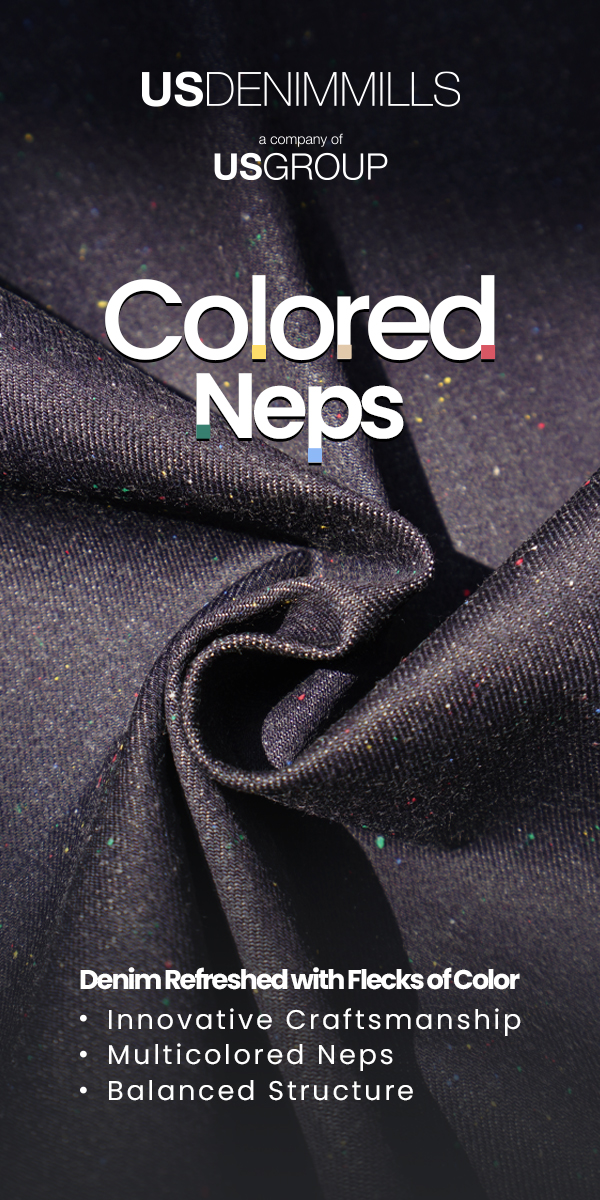Fibre fightback

Cotton always seems to bounce back from challenging times. Here, a senior vice-president of industry body Cotton Incorporated explains how.
The senior vice-president for consumer marketing at Cotton Incorporated, Kim Kitchings, says one of the attributes that she likes best about cotton is its resilience. Speaking at a recent event organised by the International Cotton Association, she said this resilience should give hope and reassurance in these difficult times to farmers who grow the fibre, to the companies that process it, and to the clothing brands and manufacturers that use it in their products.
Ms Kitchings has been at the non-profit promotional body for seven years, but she explained that she had been in the industry for 20 years already when she took up her present post. Global market insight is an integral part of her role and she explains that having access to 50 years’ worth of data is what prompts her to highlight the fibre’s ability to stand up well in challenging times.
Consumer concerns
And these are challenging times, with economic headwinds in all parts of the market coming hot on the heels of three years of disruption caused by the covid-19 pandemic. In parts of the world where concerns about covid-19 are easing, inflation is what now looms large in the minds of consumers. This was a clear finding in a recent study by Ipsos, based on 20,000 interviews with consumers in 28 different countries. Inflation was at the top of the list of concerns that respondents confessed to harbouring.
“Gasoline is up 65%, food 20% and utilities 27%,” Ms Kitchings explains. “It’s double-digit inflation. The good news for us is that apparel is up, too, by between 2% and 6%, depending on which numbers you look at. However, when you have double-digit increases in things like utilities, energy and food, apparel becomes discretionary.” She points out the importance of this to the cotton industry because 85% of the fibre goes into apparel and home textiles.
It was inevitable that this turmoil would lead to price volatility, she insists. Prices went up with the onset of covid-19 in spring 2020 and continued to go up until a commodity sell-off began last May. There have been further spikes since then, notably because of weather; the Cotton Inc senior vice-president refers to weather as “the usual suspect”. Drought conditions in Texas caused the US Department of Agriculture to lower its cotton forecasts. Then, at the opposite extreme, severe flooding in the middle months of the year had a dramatic effect on growers in Pakistan.
Percentage share
“We know cotton will always recover,” she says, “because we have that 50-year history that shows us it will. In the US, we generally see interest rates decrease, then you see a recession, then for us in this industry, we see cotton prices start to decline and then we always see that recovery. We would probably like prices to be higher and to be more stable, but it’s not just price that matters to us, it’s also how much cotton is utilised in the marketplace.”
Her figures for recent years show that cotton’s percentage share of apparel imports into the US held steady in the low-50s until midway through 2020. It was no surprise to her to see a steep drop around that time because of the volumes of personal protective equipment, mostly made from non-woven synthetic fibres, that began to flow when the pandemic took hold . “We saw a dive, but then we saw cotton return almost immediately,” she continues. The fibre had recovered to a 50% share by the end of 2020 and even peaked at around 55% in the first half of 2021. “Consumers were buying more goods than services,” Ms Kitchings explains, “because services were not available. At that time, you could even say sales of apparel were artificially high. Now we are starting to see some declines again, which is to be expected and we will see that change and turn around again thanks to cotton’s resiliency.”
Low prices bring some benefit
One of the reason prices are low again is because production in the 2021-2022 cotton season exceeded mill use. According to Cotton Inc this has the benefit of helping retailers and brands at a difficult time. They know they do not have to worry about supply, she explains, and they know that, having stuck with cotton when the price was high, they can certainly stick with it now when the price for everything else is going higher and higher. “They know they can afford to stay in cotton, and we need them there,” she adds.
Among the studies that are informing Ms Kitchings’ current opinions is one Cotton Inc carried out recently with promotional body Cotton Council International. They spoke to consumers in 13 countries, including China, to ask what drives them to shop. Clothing comes out at number one, Ms Kitchings reveals, then groceries, electronic devices and shoes. In the study, 76% of respondents said they either like or love clothes shopping. “It’s a community event,” she says. “Taking nothing away from the rise of online shopping, people go together to do this and they’re happy to be back together. And when we asked what they are looking for in apparel, 77% said they prefer cotton, cotton blends or denim. And, by the way, not everyone knows that denim is cotton. That’s a message we have to continue to remind consumers of globally. That is part of who we are.”
What matters most
The studies show that comfort, fit and quality are what matter most to consumers when choosing apparel. After that, durability emerges as a priority, alongside price, style, fibre and environmental footprint. Brand names and the origins of garments come lower down. In messages to consumers around the globe to show that Cotton Inc is engaging fully on these issues, Ms Kitchings says she focuses on three E’s: economics, environment and emotional value.
Cotton matters economically, with global production worth more than $50 billion per year. She points to figures that show almost 100 million families are involved in producing the fibre, many of them in emerging countries, which means the industry plays an important role in the fight against poverty and want. Cotton represents 80% of all the natural fibre in use today and, when consumers express a preference for natural fibres in general, it’s cotton they have in mind, she says.
She thinks the growing importance of durability also adds weight to cotton’s sustainability story. “We can help people save money going into a recessionary period,” she explains. “When it’s discretionary, when consumers don’t have to buy clothing, we want them to believe that cotton represents the best quality and durability they can buy. When consumers talk about sustainability, it’s often not what we’re thinking in the supply chain. They’re talking about durability and longevity. We have asked consumers in 13 countries which fibre they think lasts the longest in clothing, and 57% said cotton. That’s two times more than the people who said polyester and four times more than those who said rayon.” She explains that comments about pilling, fading and shrinking apply to cotton as well as to rayon, or viscose, because they are both cellulosic fibres after all. But people are more used to cotton clothing and know how to look after it, making it easier for them to keep and wear those garments for longer.
Why pay more?
She recalls market studies from 2006 that suggested only 67% of people were willing to pay a higher price at retail for better-quality clothes. “It was the advent of fast fashion,” she says, “and there was a push for changing styles frequently and for disposable apparel, but consumers, retailers and brands in the supply chain understand better now that those garments didn’t look so great when they went to landfill.” A shift has taken place, she insists, and now 76% of consumers say they are willing to pay more for better quality. Being able to present a product that will last longer brings opportunities for denim brands and any other company using cotton.
Interesting points emerge from answers consumers give in surveys to questions about fibres they view as safe for the environment. Natural fibres come out on top, with more than double the number of consumers specifying cotton, compared to rayon, polyester and nylon. Cotton Incorporated began looking at biodegradability and the emission of microfibres in 2017 and has now run a second study on the same subject.
It has found that cotton breaks down in all types of aquatic environment faster than polyester, even when the cotton has a textile finish on it. In wastewater, according to the study, 89% of cotton fibres break down, which compares favourably to the 45% that a polyester-cotton blend will achieve and just the 5% of pure polyester. In freshwater, cotton’s score slips to 77%, but this still shows cotton in a better light than poly-cotton blends with their 33%. Polyester on its own scores zero in freshwater, which means it does not biodegrade at all. Polyester’s biodegradability improves slightly in a salt-water environment, with 4% of the fibres breaking down over the study’s timeframe of 40 days. Cotton’s percentage in salt water is 49%; poly-cotton’s is 14%.
Cotton Inc research is carried out and verified by third parties, Ms Kitchings points out, and she says the marketing claims she and her colleagues make always have science behind them. But she adds that the data around microfibres seems to her to contain an irony. This shows cotton as being a good option for helping to preserve the world’s water resources and yet one of the points of attack that advocates of synthetic fibres seem to rely on the most is water consumption.
Emotional ties
On the last of the E’s, the first thing she says is that it is important not to underestimate consumer emotion. She insists that a strong emotional connection has formed over decades between cotton garments and the buying public. She adds: “The question for us is how to leverage the emotional connection that we have been building with the consumer for more than 50 years, at least in the US. How do we evolve to do that? What are the opportunities for cotton, moving forward?”
Cotton Inc ideas that are in development at the moment include ways to improve processes for producing longer-staple cotton fibres. Ms Kitchings says this would help cotton in its never-ending competition with synthetics, but this will also be of interest to the denim industry. In the eyes of many experts, denim mills make their finest fabrics from long-staple fibres. She describes this as one of her favourites of all the projects the “entire wall of PhDs” at Cotton Inc is involved in because it will make it easier for manufacturers to create cotton garments with the drape and feel consumers are looking for.
The organisation recently spent eight weeks working with Los Angeles-based clothing brand Good American and curated a dedicated collection of cotton clothing for the company’s e-commerce site. There were 7,000 different styles across 12 product categories. Kim Kitchings says she liked the diversity that Good American, which describes itself as being ‘by women for women’, offered in this range, including diversity among the influencers the clothing brand worked with and the diversity of sizes it included in the collection.
Returning to the subject of sustainability, the Cotton Inc senior vice-president says her organisation and the denim industry showed themselves to be ahead of the curve when, more than 15 years ago now, they launched a programme called Blue Jeans Go Green. It consists of partnerships with retailers and brands to have consumers return denim garments they no longer want to wear. Customers receive a voucher they can use when buying a new jacket or dress or pair of jeans while the old product goes for recycling, with most of the material at the moment going into insultation materials for building projects. A newer recycling programme called Cotton Lives On is rolling out in Europe now. Consumers can drop off used garments at participating retailers and contribute to the effort to find new uses for the fibre, including in new consumer products such as roll-mats and mattresses.
This is the circular economy in action and also shows why cotton deserves to have a bright future, according to Ms Kitchings. “Because cotton is resilient and renewable,” she says, “it’s the preferred fibre, it is the benchmark that all other fibres still compare themselves against and it is relevant to consumers today.”
A cotton farm in California.
Photo: Shutterstock/ Sundry Photography













